Review: Mid-West Furniture Zoku
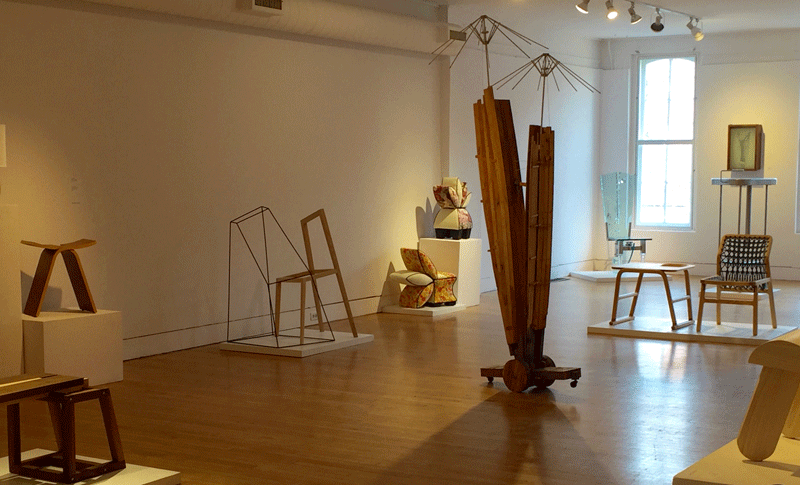
If you enjoy challenging your notions of what is functional, what is craft, and what is art then you’ll find the Ann Arbor Art Center’s latest exhibition, Mid-West Furniture Zoku, especially engaging. While it is rare to view the collective works of local art furniture designers, do not doubt that this type of talent exists all around us. A deeply rooted and growing community, these are artists that earn their living either by making or teaching furniture design – or both. Once you learn about local modern masters such as these, you can further support them with your interest and by visiting their sites, both virtual and physical (really, call them up, plan a field trip, or just stop on by).
Exhibit co-curators and art professors John DeHoog, of Eastern Michigan University, and Ray Wetzel, of the College for Creative Studies, did an exceptional job selecting this concentrated, yet highly diverse grouping of artists and arts educators to represent “our regional clan of furniture makers, designers, and educators”, or our “Furniture Zoku”, to challenge preconceived notions. According to DeHoog:
“As educators we always look at exhibitions as having an educational role for students and for the public, so Ray and I wanted to collect work that was thoughtful, challenging, and in some cases provocative. The result is a group of objects that in my mind fall into the following categories: 1 – practical/functional, 2 – art furniture, 3 – sculpture that happens to use furniture, and 4 – conceptual.
While the viewers may not consciously pick up on the distinctions, I think they understand that there are makers working in certain common veins. Ray and I also made deliberate efforts to show ranges in scale (from miniatures to the very tall sculpture), ranges in material (wood, metals, fabric…) and ranges of mood (playful to serious). In all cases though, the level of craft is very high, and the love/respect for materials evident.”
In some cases, an artist’s work may be easily placed neatly in a single category. Others’ work may fall into two, three, or even all four of the categories mentioned by DeHoog.
Detroit artist Marco Terenzi, a graduate of the Art Furniture program at the College for Creative Studies, creates work that defies categorization. His fully functional replicas of woodworking hand tools are impeccably articulated in quarter-scale miniature. Functional, though not practical, these pieces are becoming highly sought-after collectibles. The precision necessary to successfully accomplish this type of construction and functionality is mind-boggling, but Terenzi is intensely disciplined. He’s even replicated his workshop in fully functional quarter scale. And, at 25 years old, he’s only just getting started.
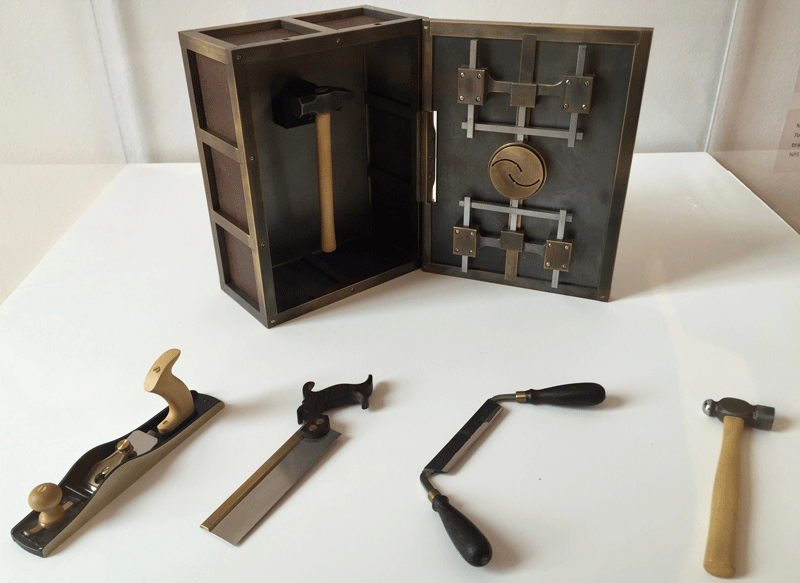
Detroit-based functional furniture and object designer, Andy Kem's Rand Table, made from American ash and molded cork, holds center stage in the main room of the exhibit. Kem has this to say about his approach to creating functional objects:
“Using wood, man-made wood products, and rapid prototyping, my work delves into two directions: on one hand more traditional craft techniques—but interpreted in nontraditional ways—and on the other, the use of digital tools to enable and realize new interactions amongst the parts that constitute the objects I create. In the merging of my different investigations, my work transcends function to arrive at a unique aesthetic language.”
Curator Ray Wetzel said about inviting Andy Kem:
“I wanted to bring the product design approach to furniture design and manufacture into the conversation. Andy has done quite a bit of work with c-n-c cut parts and manufactured raw materials. I've always liked Andy's work and his approach to design and maintaining craftsmanship. His work is formal, subtle and detailed.”
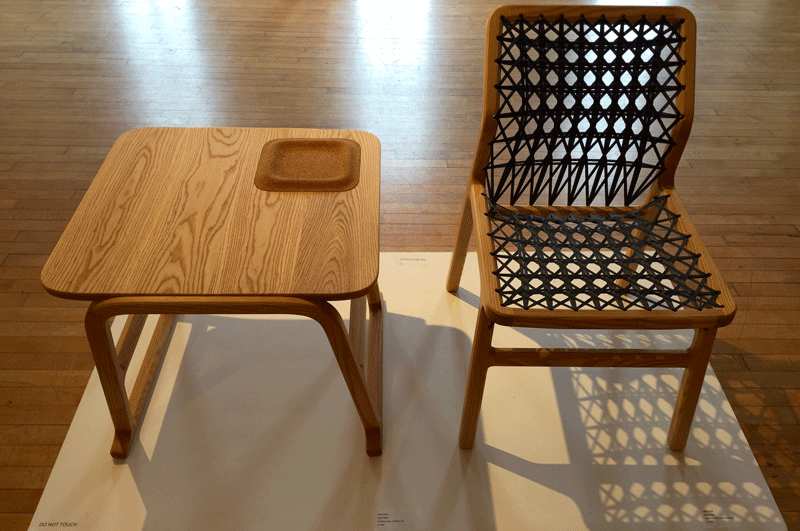
Also falling into the category of practical/functional, is the work of Ann Arbor-based furniture designer, John Baird. You may have interacted with his work if you’ve frequented local establishments like the AUT Bar or Salon 344. Reminiscent of old wooden classroom desks that conjure feelings of familiarity and durability, but with a modern and elegant edginess, Baird has on exhibit a prototype and finished version of the short-run, custom-fabricated stools he designed and produced for Comet Coffee.
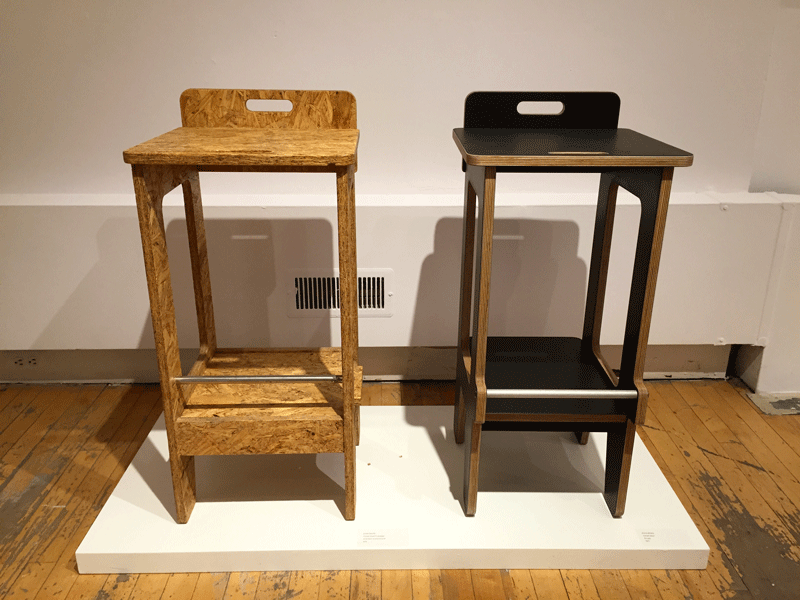
On the subject of art furniture, it would be impossible for me not to mention the work of Maxwell Davis, Professor and Head of the Art Furniture Area at the College for Creative Studies, I mention it not only because (full disclosure) he’s my partner, but because he has also served as instructor and mentor to several of the other artists in this exhibit. More than his artwork, this to me is his most poignant contribution here.
One of the two works on exhibit by Davis is Chair #13, a glass and stainless steel chair that defies all intellectual, tactile, and functional logic. I love to see viewers reach out and run their fingers along this chair’s jagged-cut spine. The thick, raw edges of cut glass with their reflective waves and promise of danger, visually sewn together with rounded hot glass stitches, are near impossible to resist! The chair’s seat, back, and legs are all made from various forms of hot and cold glass, inviting the assumption that it doesn’t actually function as a chair. It does.
Presenting a temptation greater than touching the edges of broken glass, the most irresistible pieces in this exhibit to me, are those made by Aaron Blendowski. Blendowski is a Detroit-based furniture and object designer, who also works as Fabrications Coordinator at Cranbrook Academy of Art, and Co-Founder of OmniCorpDetroit. His Moderondack Chairs, made from natural and stained cypress, are joyfully oversized, simple and shapely; but not quite flawless. Their voluptuous seats are swimming with the natural detail of the textured wood grain that has been intentionally alternated during the process of gluing together the thick strips from which the chairs are constructed. The occasional knothole or indentation in the wood are left in plain sight. Finely-shaped and sanded to a smooth and shiny finish, I will neither confirm nor deny having broken a 117 Gallery rule while viewing these pieces.
Nicholas Stawinski may be the most unexpected furniture maker to fall into the category of art furniture, based on what we usually think of when thinking about upholstered furniture. A native of Detroit, Stawinski is an artist, furniture designer, and fourth-generation upholsterer who uses the post-industrial landscape of Detroit as his inspiration. Stawinski says:
“My work pays homage to the ottoman and footstool forms that I helped my father create in the back of our upholstery shop. Through recognizable shapes and the motifs of furniture, my ottomans contort and connect in ways that make the forms new and unfamiliar. Some of the fabrics I use reference specific interiors—such as my grandmother's living room in Michigan, where I would spend time while my father and grandfather worked in the shop downstairs— while others recall the endless parade of floral armchairs that marched through our door. Other shapes and patterns draw from memories of riding across Detroit in our delivery van, going to help little old ladies in retirement homes select fabric for their favorite chair, the one—they say—that will be passed on to their children and grandchildren. In this way, my ottomans are a celebration of the work ethic and skilled trade of upholstery, taught to me by my father and grandfather, as well as the way interior spaces shape our memories.”
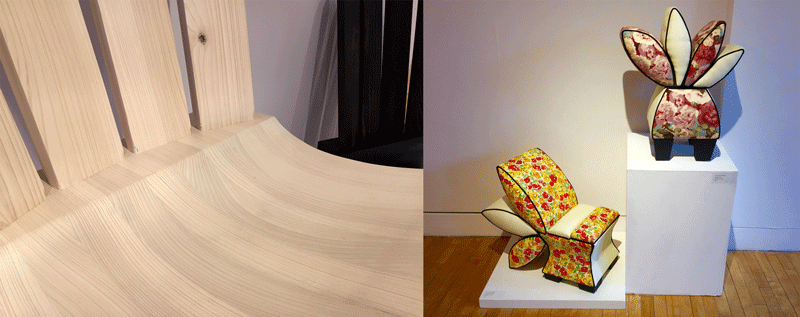
I must also acknowledge my appreciation for the multi-faceted perspective on functional and conceptual furniture design of Detroit-based artist Colin Tury. While the highly graphic conceptual piece "Remember me…" made from ash and steel, is representative of Tury’s general aesthetic, it is but an ever so small glimpse of his overall talent as a furniture designer. Tury’s work easily traverses all categories from practical and functional to conceptual. It manages to be lanky yet graceful, and cautiously modest, while also conveying balance and confidence. Tury states:
“To me, craft is an important factor to our culture because it provides us a reminder that we are all still human and that we make things for a reason, not just to look at. Furniture specifically shares importance in that we are all unconsciously intimate with it throughout our day. Modern furniture has become a game of geometry in which designers compositionally arrange basic shapes and colors, and eliminate any feature beyond its basic function. We have lost all sense of material in a sea of powder-coated aluminum and veneered particleboard. I want to present material in furniture for its true nature, and highlight human error because it is a reminder that someone consciously created it. I strive to create conceptual meaning to all my pieces so that it can tell a story beyond its own physical existence. Materials play a big role in this because they have unique, yet specific, physical attributes that we can obey or abstract. A story can exist just in bringing two materials together in an interesting way.”
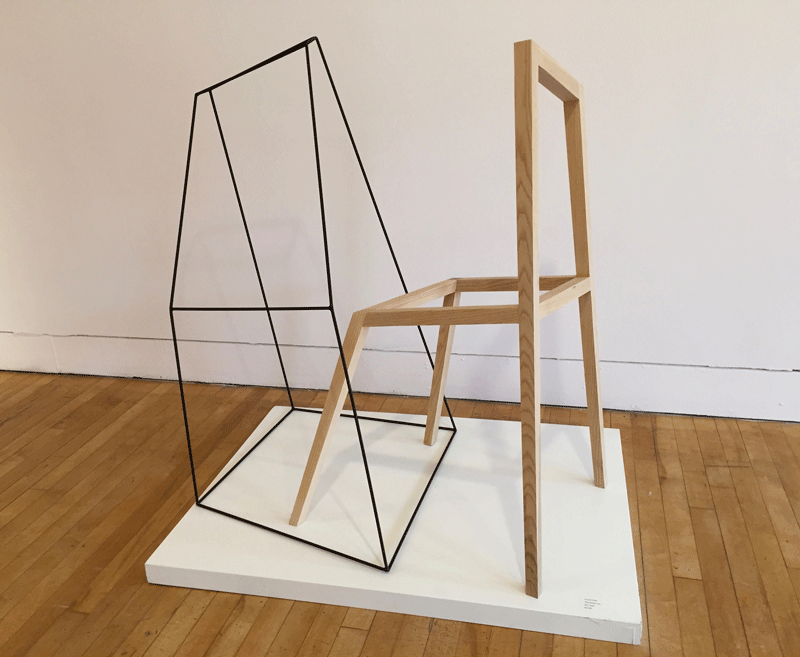
In my mind, the only truly disappointing aspect of this exhibit are the posted signs constantly reminding visitors not to touch the artwork, when the very nature of the work evokes the desire to touch and interact with it.
Because, after all, it is furniture.
Terry Soave is Manager of Outreach & Neighborhood Services and also coordinates exhibits at the Ann Arbor District Library.
"Mid-West Furniture Zoku" will run through March 5, 2016, at 117 Gallery at the Ann Arbor Art Center, 117 W. Liberty St., Ann Arbor, MI 48104. Gallery hours are Monday through Friday, 10 am-7 pm, Saturday 10 am-6 pm, and Sunday 12-5 pm. Artist and Curator Talk: Thursday, February 18, 6-8 pm. Co-curators John DeHoog and Ray Wetzel, along with some of the artists of Zoku, will talk about their processes and artworks from the exhibition.


































